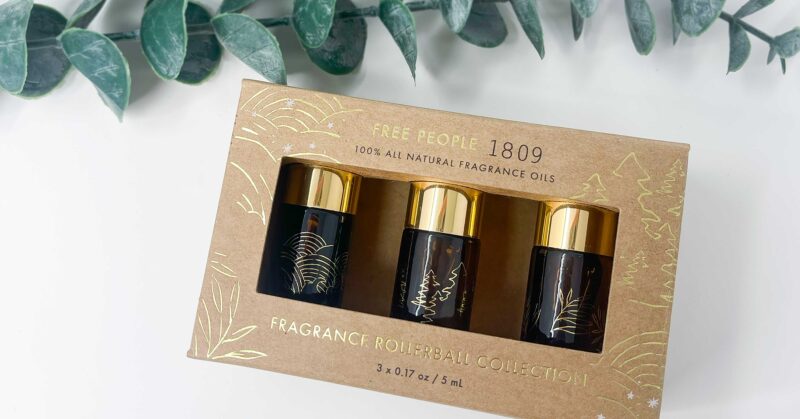Eco-Friendly Packaging: What It Is, Why It Matters, and How to Get Started
The Rising Importance of Sustainable Packaging
Sustainability has become a top priority for both consumers and businesses, and packaging is at the heart of that shift. Once a minor consideration, eco-friendly packaging is now a mainstream expectation and a powerful factor influencing purchasing decisions.
According to the 2023 Global Buying Green Report by Trivium Packaging, 82% of consumers are willing to pay more for products that use sustainable packaging. Among Gen Z shoppers, that number climbs to 90%, underscoring the growing environmental commitment of younger generations. The same report found that 71% of global consumers had chosen a product in the past six months specifically because the packaging was sustainable.
This shift highlights a deeper awareness of how everyday choices, from what consumers buy to how products are packaged, can help protect the planet. For businesses, this is no longer a trend but a strategic imperative. Brands that embrace green packaging for businesses, whether through custom folding cartons or pressure sensitive labels, can not only reduce their environmental impact but also strengthen customer loyalty, comply with evolving regulations, and future-proof their operations in an increasingly eco-conscious marketplace.
If you’re a business owner or a professional in packaging or procurement, understanding what sustainable packaging is, why it matters, and how to apply it to your operations is essential. This guide will walk you through key concepts, types of sustainable packaging, consumer expectations, and practical steps to help your business align with today’s sustainability standards.

What is Sustainable Packaging and Why It Matters
Sustainable packaging refers to the use of materials and processes that reduce negative environmental impact throughout a product’s lifecycle. This includes packaging that is recyclable, biodegradable, compostable, reusable, or made from post-consumer recycled content. The goal is to reduce packaging waste, conserve resources, and reduce carbon emissions without compromising product safety or quality.
Choosing eco-friendly packaging materials benefits more than just the environment. It allows businesses to:
- Meet growing consumer demand for environmentally responsible products
- Enhance brand reputation and customer trust
- Comply with evolving regulations on waste reduction and materials use
- Contribute to a circular economy, where resources are reused instead of discarded
By adopting sustainable packaging solutions, companies show that they’re committed to long-term environmental stewardship. In today’s market, that commitment is not only valued, it’s expected.
Types of Sustainable Packaging
As demand for eco-conscious products grows, businesses have more options than ever when it comes to choosing sustainable packaging materials. Whether you’re shipping consumer goods or designing retail packaging, selecting the right type of eco-friendly packaging can help reduce waste and align your brand with environmental values. These are great eco-packaging ideas for products.
Here are some of the most widely used types of sustainable packaging:
1. Biodegradable Packaging
Biodegradable packaging solutions are made from materials that break down naturally in the environment, reducing long-term waste. Common biodegradable materials include:
- Cornstarch-based plastics
- Sugarcane fiber (bagasse)
- Mushroom packaging
- Paper pulp molded packaging
These materials are ideal for food packaging, e-commerce products, and other items where disposal and environmental impact are top of mind.

2. Recyclable Packaging
Recyclable packaging options are made from materials that can be processed and turned into new products after use. This includes:
- Cardboard and paperboard
- Certain plastics like PET or HDPE
- Aluminum and tin
- Glass containers
Using recyclable packaging materials not only reduces waste but also supports circular economy efforts by keeping valuable resources in use longer.
3. Reusable Packaging
Reusable packaging is designed to be used multiple times before being recycled or discarded. This includes:
- Glass jars and metal tins
- Fabric tote bags and cloth wraps
- Refillable pouches or dispensers
- Durable mailing boxes and containers
By investing in reusable packaging, brands can significantly reduce single-use packaging waste and foster deeper customer engagement through loyalty and sustainability programs.
This is also a powerful way to explore how to make packaging more sustainable.

4. Compostable Packaging
Compostable packaging goes a step further than biodegradable packaging by breaking down into natural elements in a composting environment, typically within a defined timeframe. Materials used include:
- PLA (plant-based polylactic acid)
- Kraft paper with compostable coatings
- Compostable mailers and utensils
This type of packaging is particularly effective for brands that want to reduce landfill contributions and appeal to highly eco-conscious consumers.
5. Post-Consumer Recycled (PCR) Packaging
PCR packaging is made from materials that consumers have already used and recycled. These materials are collected, processed, and remanufactured into new packaging, often plastics or paperboard. Using PCR content:
- Helps divert waste from landfills
- Lowers demand for virgin raw materials
- Reduces energy consumption and emissions in manufacturing
It’s a practical and scalable option for companies looking to reduce their environmental footprint. And it’s a great example of what makes packaging eco-friendly. It’s a practical and scalable option for companies looking to reduce their environmental footprint without overhauling existing packaging systems.
Choosing the Right Eco-Friendly Packaging
Selecting the right eco-friendly packaging materials depends on your product type, customer expectations, budget, and sustainability goals. Often, the most effective approach is to combine multiple sustainable packaging types into a strategy that meets both environmental and operational needs.
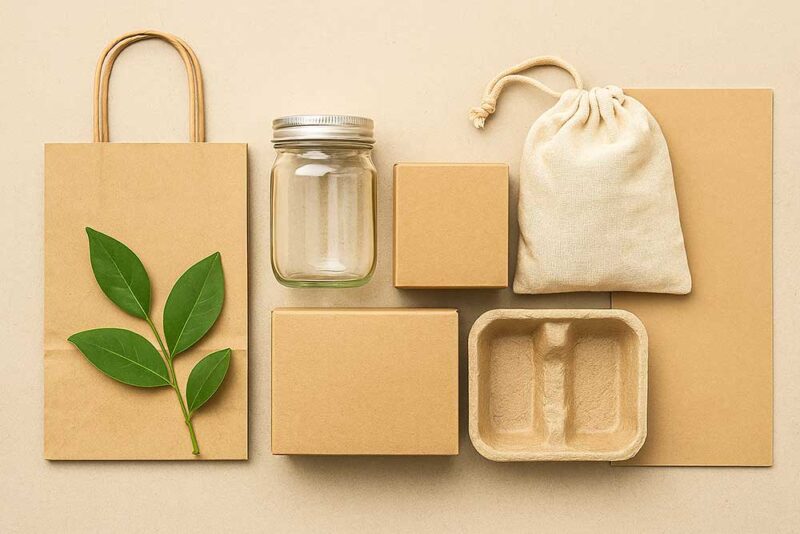
Why Use Eco-Friendly Packaging?
Adopting eco-friendly packaging is more than a sustainability trend, it’s a smart business move with lasting benefits for your brand, your customers, and the planet. As consumers become increasingly aware of the environmental impact of their purchases, companies that align with those values stand to gain in both loyalty and long-term relevance.
Here’s why using eco-friendly packaging matters:
1. Environmental Benefits
Eco-friendly packaging helps reduce the volume of waste sent to landfills and oceans. By using biodegradable, recyclable, or reusable materials, brands can lower their carbon footprint and conserve natural resources. Sustainable packaging also supports global efforts to reduce reliance on fossil fuels and minimize greenhouse gas emissions.
2. Brand Reputation and Trust
Businesses that use eco-friendly packaging for small business or enterprise solutions send a clear message: they care about environmental responsibility and future generations. This transparency builds trust, enhances brand perception, and sets you apart in competitive markets.

3. Enhanced Customer Experience
Eco-friendly packaging often signals higher product quality and thoughtful design. Whether it’s reusable containers, minimal waste, or clear recycling instructions, sustainable packaging creates a positive unboxing experience and reassures customers that they’re making an ethical choice.
It also reduces consumer guilt around packaging waste, making them feel better about their purchase and more likely to return.
4. Long-Term Business Resilience
As global regulations tighten around waste and plastic use, sustainable packaging prepares your business for the future. Forward-thinking brands that adopt eco-friendly practices now will be better positioned to navigate compliance, avoid penalties, and meet evolving retailer and investor requirements.
5. Contribution to a Circular Economy
By using recyclable and compostable materials or incorporating post-consumer recycled (PCR) content, businesses help close the loop on waste. This shift supports a circular economy, where materials are reused instead of discarded, promoting long-term environmental and economic sustainability.
Switching to eco-friendly packaging doesn’t just reduce your environmental footprint, it strengthens your brand, deepens customer relationships, and helps future-proof your operations.

How to Switch to Sustainable Packaging
If your business is ready to reduce its environmental impact, knowing how to switch to sustainable packaging is an essential first step. It’s not just about choosing greener materials, it’s about creating a packaging strategy that balances sustainability with cost, performance, and customer experience.
Here are five practical steps to help you transition effectively:
1. Start with a packaging audit
Before making changes, assess your current packaging materials, structure, and supply chain. A thorough audit will help you identify unnecessary waste, inefficiencies, and non-sustainable materials. This foundational step is key to understanding how to make packaging more sustainable without sacrificing product protection or brand aesthetics. In many cases, adopting a minimal packaging approach can reduce material use, lower costs, and improve your environmental footprint—making it a smart starting point for any sustainability strategy.
2. Choose the right sustainable materials
Next, select materials that balance sustainability, performance, and cost. Whether it’s recycled cardboard, biodegradable packaging solutions, or compostable film, the materials you choose will shape your impact. Prioritize eco-friendly packaging materials that are certified, ethically sourced, and appropriate for your product use case.
3. Optimize Your packaging design
Design for efficiency by using fewer materials, right-sizing your boxes, and eliminating unnecessary components. A minimalist approach not only cuts costs but also helps reduce packaging waste and carbon emissions. Smart design is one of the simplest ways to improve sustainability without changing your entire supply chain.
4. Communicate Your sustainability efforts
Your packaging can be a storytelling tool. Use messaging, icons, or QR codes to explain your sustainability practices. Showcasing eco-packaging ideas for products builds consumer trust and helps educate buyers on proper disposal or reuse. Transparency turns a functional package into a brand moment.
5. Work With a Packaging Sustainability Partner
You don’t have to go it alone. Collaborating with a trusted expert in eco packaging ensures your solutions meet performance standards, comply with regulations, and align with your brand values. A strategic partner brings material innovations, testing, and lifecycle insights to scale your sustainability efforts.
An Overview of the Sustainable Packaging Market
1. Market Growth Outlook
The sustainable packaging market is projected to grow to $737.6 billion by 2030. This surge is driven by both private and public sector efforts to accelerate the transition to eco-friendly packaging in response to evolving regulations and consumer expectations. One key driver is the increasing adoption of sustainable packaging in the food and beverage industry, where brands are exploring recyclable, compostable, and reusable options to enhance their environmental image and meet customer demand.
2. Food & Beverage Sector Leads
The food and beverage industry is the leading segment in the global green packaging market. The COVID-19 pandemic intensified this trend by increasing the need for hygienic, safe food delivery options, prompting many businesses to adopt sustainable packaging as a way to reduce waste while maintaining safety standards. This sector continues to be a primary testing ground for innovative eco-friendly packaging solutions.
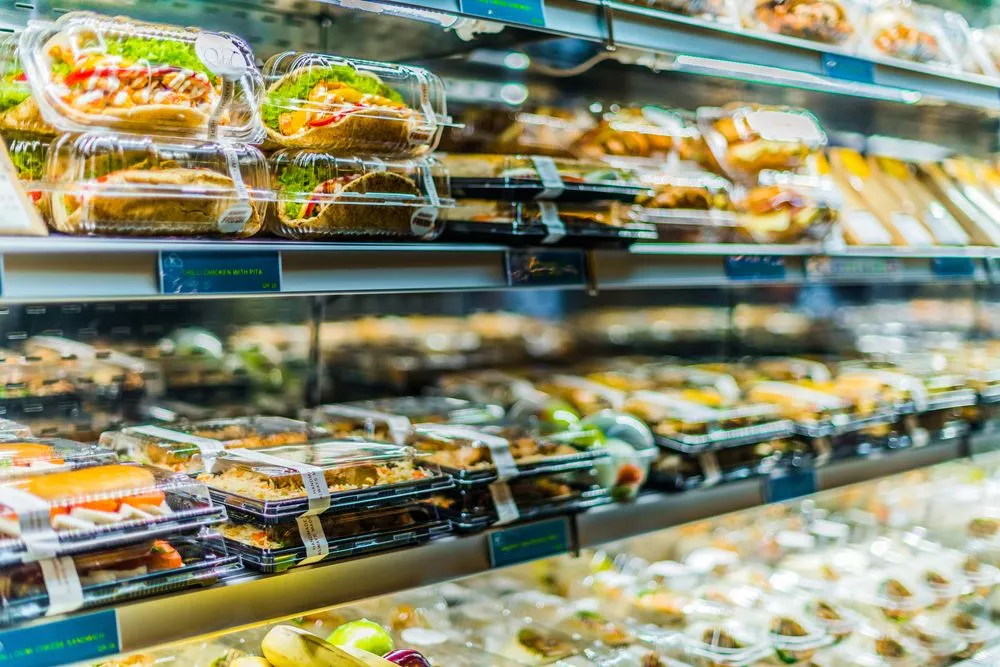
3. Asia Drives Global Leadership
China has surpassed the U.S. as the largest player in the global packaging market. Rapid packaging growth across Asia, particularly in China, India, and Indonesia, is closely tied to rising environmental awareness and consumer willingness to pay more for sustainable products. Survey data from these regions consistently shows stronger concern about environmental issues compared to other parts of the world.
4. Strong Projected Growth Rate
The green packaging market is expected to grow at a 6.1% compound annual growth rate (CAGR) between 2020 and 2028. This upward trend is fueled by greater public awareness of sustainability, new legislation restricting single-use plastics, and increased demand for eco-friendly alternatives like folding cartons, compostable packaging, and paper-based materials, especially within the food service sector.
5. Recycled Content Dominates Revenue
Among all segments, recycled content packaging currently generates the highest revenue in the sustainable packaging space. This growth is supported by stricter global regulations and heightened environmental concern across industries. Sectors such as fast-moving consumer goods (FMCG), pharmaceuticals, and personal care are leading the shift to green packaging, often incorporating recycled and bioplastic materials as part of their broader sustainability initiatives.
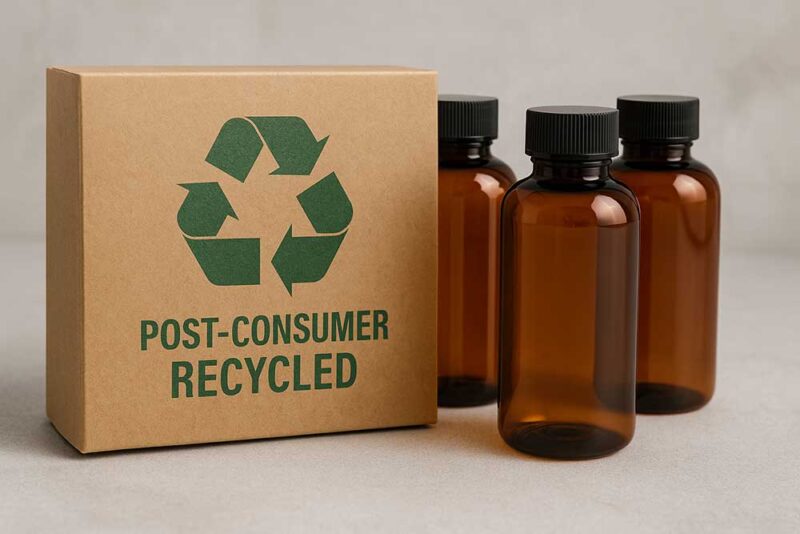
Customer Behavior Trends on Sustainable Packaging
1. Most Consumers Want to Reduce Environmental Impact
A growing number of consumers are consciously shifting their purchasing habits to lessen their environmental footprint. 73% of consumers say they are actively looking to reduce their impact on the planet. A separate survey found that 41% of buyers are willing to pay more for organic or environmentally friendly products, especially those with sustainable packaging that aligns with their values.
2. Recyclable Packaging Influences Buying Decisions
Recyclability continues to play a central role in consumer purchasing decisions. According to the 2023 Global Buying Green Report by Trivium Packaging, 82% of consumers worldwide say they are willing to pay more for products that use sustainable packaging. The preference is even stronger among younger consumers, with 90% of Gen Z respondents expressing this willingness. The same report notes that 71% of global consumers actively consider recyclability when deciding which products to buy. These findings reflect a deep and growing environmental consciousness among shoppers, particularly Millennials and Gen Z, who expect brands to offer recyclable packaging options that align with their sustainability values.
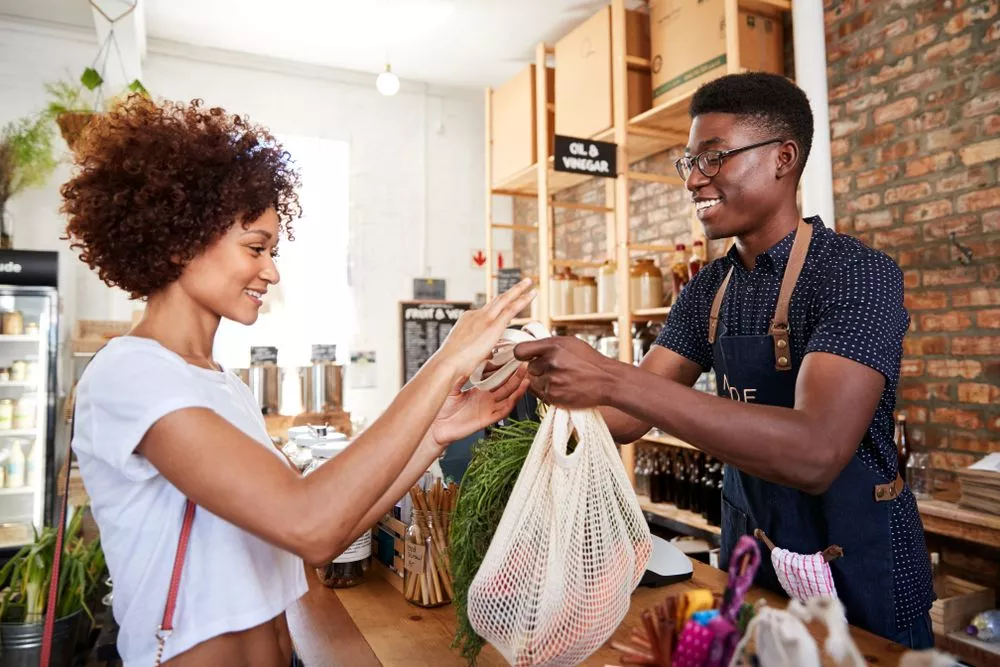
3. Half of U.S. Shoppers Will Pay More for Sustainability
Roughly 50% of U.S. consumers say they’re willing to pay a premium for products that use sustainable packaging. This trend continues to grow as more buyers become aware of the long-term consequences of waste and non-recyclable materials. Fortunately, the increasing availability of eco-friendly packaging at wholesale prices makes sustainable options both accessible and cost-effective for brands and small businesses alike.
4. Sustainability Now Rivals Brand and Price
Today’s consumers are no longer loyal to brand or price alone, sustainability is a key purchase driver. A global study by Unilever revealed that 33% of shoppers are choosing products specifically from companies they believe are doing something positive for the environment. Brands that embrace eco-conscious packaging are more likely to earn trust, loyalty, and repeat business.
5. Demand for Reusable and Recyclable Packaging Grew During the Pandemic
The COVID-19 pandemic reshaped many aspects of consumer behavior, especially around hygiene and sustainability. According to recent data, 58% of consumers became more likely to purchase items with reusable or recyclable packaging. With health and environmental concerns at the forefront, customers now favor products they can reuse, repurpose, or responsibly dispose of, reinforcing the importance of eco-friendly packaging solutions.

Sustainable Packaging and Its Environmental Impact
Consumers are transitioning to sustainable packaging due to its positive environmental benefits. Here are some examples of sustainable packaging helping conserve the planet and its resources.
1. Reduced solid waste
According to a U.S. Environmental Protection Agency (EPA) report, packaging and containers account for a significant portion of municipal solid waste. In 2018 alone, 82.2 million tons of solid waste were used, or 28.1% of the total generation.
Using recyclable and reusable materials allows you to cut down this staggering figure. By switching to an eco-friendly alternative, your business can aid in reducing the amount of solid waste in landfills.
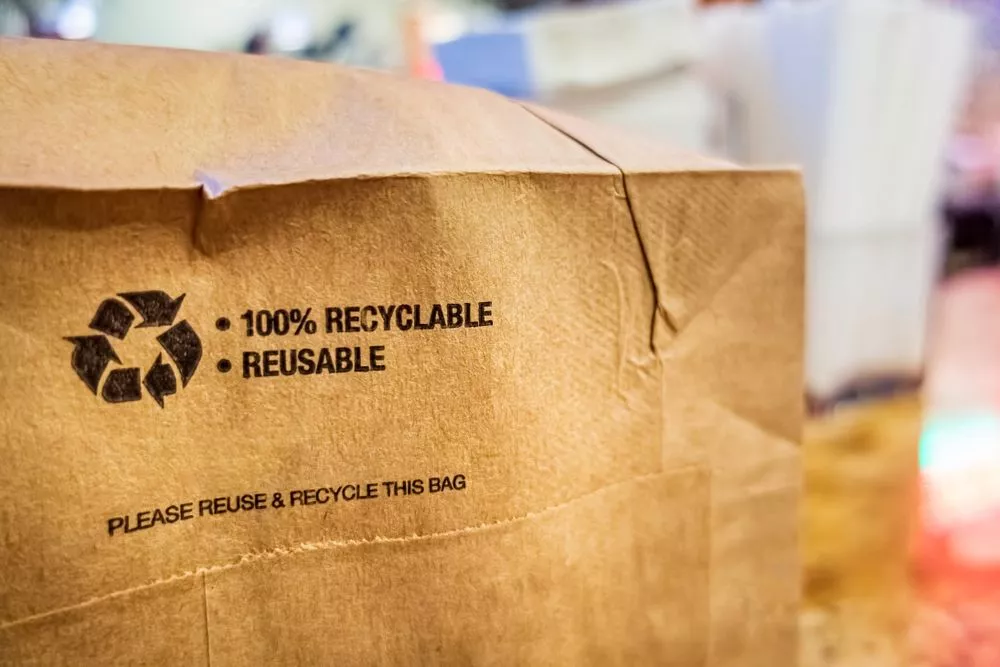
2. Lesser dependence on fossil fuels
Fossil fuel is a non-renewable resource, unfortunately, 99% of all plastic products require it for production. When fossil fuels are burned, they release large amounts of carbon dioxide, causing an extensive release of greenhouse gases into the air, which is highly harmful to the planet and can exacerbate global warming.
Fortunately, using green product packaging enables you to reduce your company’s carbon footprint caused by packaging manufacturing.
3. Decreased use of natural resources
A minimalist approach to packaging design contributes to the overall preservation of natural resources. Adopting this package production method ensures the conservation of renewable materials for future generations by allowing natural resources to replenish.
4. Increased energy efficiency
Traditional packaging relies on burning fossil fuels for its manufacturing process. As previously mentioned, fossil fuel is harmful to the environment and is a non-renewable resource that takes millions of years to form underground before it’s ready for extraction.
For sustainable packaging manufacturers, the green initiative does not stop with the materials used. Organizations that switch to eco-friendly packaging do their best to use alternative power, such as solar or wind energy, which bodes well for the environment and sustainability initiatives.
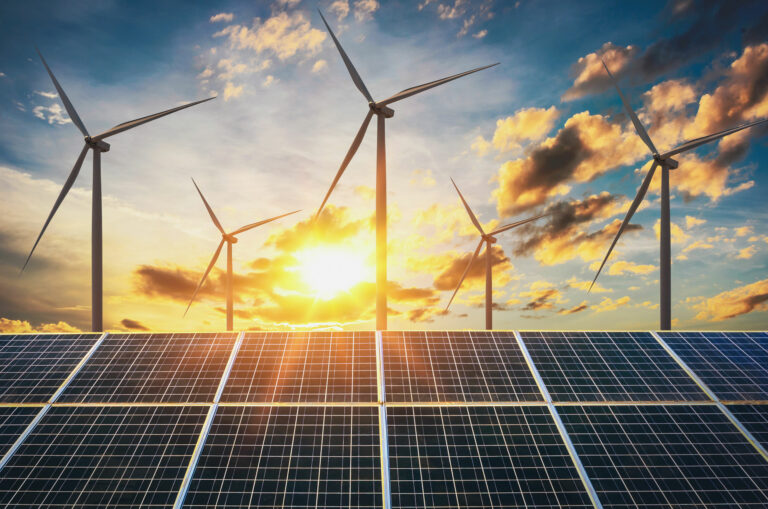
5. Extended shelf life
One of the most significant driving factors that pushed manufacturers to use sustainable packaging is to gain consumer favor.
Food products have an extended shelf life when packaged in sustainable material. For instance, low-density perforated polyethylene packaging can extend the shelf life of fruits such as bananas to 30 days. Using environmentally friendly products also gives consumers added value and reduces waste in landfills by 20%.
U.S. Regulations that Drive the Sustainable Packaging Switch
The U.S. is one of the countries that has shown an increased focus on transitioning to sustainable packaging. Here are some U.S. laws and regulations that drive the switch to sustainable packaging and help the country reach its goals.
1. CLEAN Future Act
The CLEAN Future Act tasks all federal agencies of the U.S. government to reduce greenhouse emissions to at least 50%. Through this act, the government hopes to minimize gas pollution from 2005 levels by 2030 and achieve zero by 2050.
To help govern this initiative, the government enlisted the help of the EPA to monitor, report, and make recommendations to each agency’s plan annually.
2. New York City’s Styrofoam ban
New York’s (NY) first Styrofoam ban happened in 2015, but before the imposition of fines, a NY Supreme Court judge overturned the ruling. The judge stated that NY coalition recycling firms and plastic manufacturers had offered feasible recycling plans to their consumers.
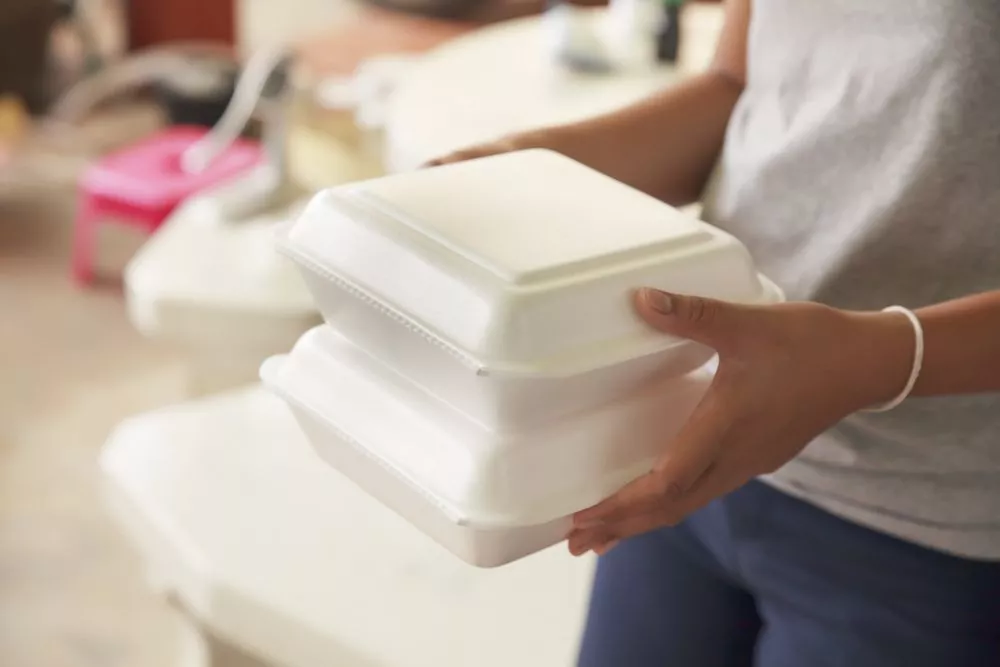
Fortunately, the ban on single-use Styrofoam containers has been reinstated. The ban applies to food service establishments within the city, including stores and mobile food trucks offering or selling polystyrene packaging.
3. California Safer Food Packaging and Cookware Act of 2021 (AB 1200)
California (CA) Governor Gavin Newsom signed AB 1200 into law in October 2021. Effective January 1, 2023, the law imposes a total ban on producing, importing, and using paper-based food packaging containing perfluoroalkoxy (PFA).
Additionally, it requires cookware producers to be transparent about the possible harmful materials and chemicals used in their production.
Findings that link PFA to cancer, physical and environmental harm, and vaccine disruption pushed the California local government to pass the act. The enactment of AB 1200 ensures producers utilize the least toxic alternatives.
4. Heavy Metal Restrictions
The U.S.’s restrictions on heavy metal compounds ban the intentional and incidental incorporation of metals such as cadmium, mercury, and hexavalent chromium in packaging products. This ban is due to the use of stabilizers, dyes, and adhesives in traditional packaging, which can be harmful to consumers.
Aside from CA and NY, 19 other U.S. states have Toxics in Packaging legislation.
Extended Producer Responsibility (EPR) and the Push Toward Sustainable Packaging
As sustainability expectations increase across industries, Extended Producer Responsibility (EPR) policies are becoming a key force behind the move toward eco-friendly packaging. These policies make manufacturers and brand owners responsible for the environmental impact of their products, including what happens to packaging after it is used.
EPR regulations require businesses to manage the collection, recycling, or disposal of their packaging materials. This responsibility encourages companies to design packaging that is easier to recycle, reuse, or compost. It promotes the use of recyclable packaging options, biodegradable packaging solutions, and materials that create less waste.
For many businesses, EPR presents both a challenge and an opportunity. On one hand, it may require changes to packaging operations and new compliance efforts. On the other hand, it motivates innovation in sustainable packaging, improves brand reputation, and reduces long-term environmental and financial costs.
Taking early action on EPR helps companies prepare for future regulations. Several U.S. states are already moving toward adopting EPR policies, following examples from the European Union and Canada. Brands that use eco-friendly packaging materials will be in a stronger position to meet these new requirements and stand out in a competitive market.
To align with EPR principles, companies can:
- Conduct packaging audits to identify and reduce the use of non-recyclable materials
- Shift toward recyclable and reusable packaging wherever possible
- Use post-consumer recycled content in packaging designs
- Educate customers on how to reduce packaging waste and recycle properly
- Explore eco packaging ideas for products that deliver both sustainability and performance
EPR is part of a broader shift toward responsible manufacturing. For brands exploring how to switch to sustainable packaging, these policies support long-term environmental goals and demonstrate a commitment to accountability and innovation.
Give Green a Chance
Sustainability in products is no longer an option but a demand, as more people realize the harmful effects of using unsustainable packaging. This growth in awareness has led the public to take active measures to help the environment and trust producers to do the same.
Switching to sustainable packaging enables businesses to preserve the environment and meet customer expectations. Whether you’re a national brand or searching for eco-friendly packaging for small businesses, your sustainability journey starts here.
Meyers offers decades of experience creating eco-packaging ideas for products that are both sustainable and impactful. From design to delivery, we help you bring your values to life in every package.
Contact Meyers today to discuss your custom sustainable packaging needs.


